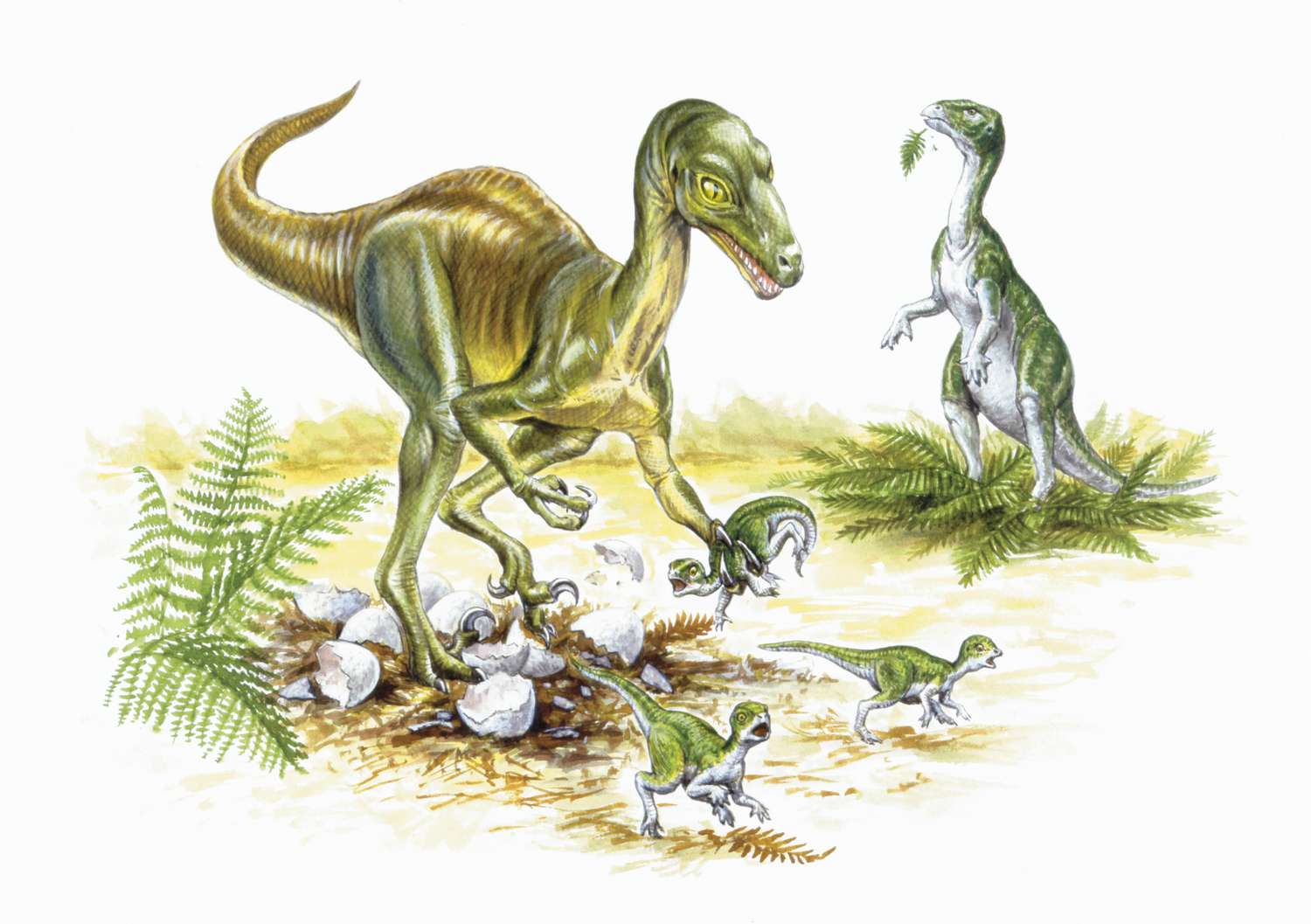
Troodon is a fascinating dinosaur genus that has captivated the imagination of paleontologists and dinosaur enthusiasts alike. This remarkable creature roamed the Earth during the Late Cretaceous period, approximately 77 million years ago. Known for its relatively large brain size and potential intelligence, Troodon has sparked numerous discussions and debates within the scientific community. Its name, which means "wounding tooth," reflects the sharp, serrated teeth that adorned its jaws. Despite its relatively small size, Troodon possessed remarkable agility and predatory prowess, making it a formidable hunter in its prehistoric ecosystem. As we delve into the intriguing world of Troodon, we will uncover 11 compelling facts that shed light on this enigmatic dinosaur and its place in the ancient world.
Key Takeaways:
- Troodon, the “wounding tooth,” was a smart and agile dinosaur with a potential nocturnal lifestyle, adorned with feathers, and a captivating presence in popular culture.
- Fossil discoveries of Troodon have sparked scientific debates, shedding light on its intelligence, bipedal stance, and diverse habitat preferences during the Late Cretaceous period.
Troodon, the "Wounding Tooth"
Troodon, whose name means "wounding tooth," was a fascinating dinosaur that roamed the Earth during the Late Cretaceous period, approximately 77 million years ago. This remarkable creature was a theropod, belonging to the family of dinosaurs that includes the fearsome Tyrannosaurus rex. Troodon was known for its relatively large brain and keen intelligence, making it a captivating subject of study for paleontologists and dinosaur enthusiasts alike.
A Nimble Predator
Troodon was a nimble and agile predator, equipped with sharp, serrated teeth that were well-suited for hunting and consuming small prey. Its slender build and long legs suggest that it was a swift runner, allowing it to pursue its quarry with remarkable speed and precision. This combination of agility and intelligence likely made Troodon a formidable hunter in its prehistoric ecosystem.
Troodon's Enigmatic Intelligence
One of the most intriguing aspects of Troodon is its remarkable intelligence, which sets it apart from many other dinosaurs of its time. With a brain size relative to its body mass comparable to modern birds, Troodon is believed to have possessed advanced cognitive abilities. This intelligence likely contributed to its success as a predator, enabling it to adapt to various hunting strategies and environmental challenges.
Troodon's Bipedal Stance
Troodon was a bipedal dinosaur, meaning that it walked and ran on two powerful hind legs. Its forelimbs were likely used for grasping and manipulating objects, showcasing a level of dexterity uncommon among dinosaurs. This distinctive physical characteristic further emphasizes the unique nature of Troodon within the diverse array of prehistoric creatures.
Troodon's Fossil Discoveries
Fossil discoveries of Troodon have provided valuable insights into the anatomy and behavior of this enigmatic dinosaur. These findings have sparked numerous scientific studies and debates, shedding light on topics such as its locomotion, feeding habits, and social interactions. The ongoing exploration of Troodon fossils continues to expand our understanding of this captivating species.
Troodon's Potential Nocturnal Behavior
Recent research has suggested that Troodon may have been nocturnal, meaning that it was primarily active during the night. This hypothesis is based on its large eyes relative to its skull size, a characteristic often associated with creatures that are adapted to low-light conditions. If confirmed, this nocturnal behavior would further distinguish Troodon as a uniquely adaptable and resourceful predator.
Troodon's Hypothesized Feathered Appearance
There is compelling evidence to suggest that Troodon, like many of its theropod relatives, may have been adorned with feathers. This hypothesis is supported by the presence of feather impressions in the sediment surrounding certain Troodon fossils. The image of a feathered Troodon offers a striking glimpse into the diverse and dynamic evolutionary adaptations of ancient dinosaurs.
Troodon's Taxonomic Debate
The classification of Troodon within the dinosaur family tree has been a subject of ongoing scientific debate. Its precise placement and relationships to other theropods continue to be scrutinized as paleontologists strive to refine our understanding of evolutionary lineages and biodiversity during the Late Cretaceous period. This taxonomic puzzle adds an intriguing layer of complexity to the study of Troodon.
Troodon's Paleobiogeography
The geographic distribution of Troodon fossils has provided valuable clues about its range and habitat preferences. Fossil discoveries have been made in regions such as North America, suggesting that Troodon inhabited diverse ecosystems during its existence. Through the analysis of paleobiogeographic data, researchers continue to piece together the ancient landscapes that Troodon once called home.
Troodon's Influence in Popular Culture
The captivating nature of Troodon has not been confined to scientific circles. This remarkable dinosaur has made appearances in popular culture, inspiring portrayals in literature, film, and other forms of media. Its unique characteristics and mysterious allure have captured the imagination of storytellers and artists, ensuring that Troodon remains a compelling figure in the realm of prehistoric creatures.
Troodon's Enduring Legacy
The legacy of Troodon extends beyond its prehistoric existence, serving as a testament to the enduring fascination with dinosaurs and the ongoing quest to unravel the mysteries of ancient life. As new discoveries and scientific advancements continue to reshape our understanding of Troodon and its contemporaries, the legacy of this "wounding tooth" remains embedded in the ever-evolving tapestry of Earth's natural history.
Conclusion
In conclusion, Troodon was a fascinating and enigmatic dinosaur that roamed the Earth during the Late Cretaceous period. Its unique characteristics, such as its large brain relative to its body size and likely nocturnal habits, set it apart from other dinosaurs of its time. Despite the mysteries that still surround this remarkable creature, ongoing research and discoveries continue to shed light on its behavior, anatomy, and evolutionary significance. With its intriguing features and the ongoing scientific interest in unraveling its secrets, Troodon remains a captivating subject of study for paleontologists and dinosaur enthusiasts alike.
FAQs
What did Troodon eat?Troodon is believed to have been a carnivorous dinosaur, preying on small animals such as mammals, reptiles, and possibly even insects.
Was Troodon intelligent?Yes, Troodon is considered one of the most intelligent dinosaurs known to science, as evidenced by its relatively large brain size compared to its body. This suggests that it may have possessed advanced cognitive abilities for a dinosaur of its time.
Troodon's captivating history and unique characteristics make this dinosaur a favorite among paleontology enthusiasts. From its razor-sharp teeth to its remarkable intelligence, Troodon continues to intrigue researchers and dinosaur lovers alike. Delving deeper into Troodon's world reveals even more fascinating aspects of its anatomy, behavior, and evolutionary significance. Exploring the wealth of knowledge surrounding Troodon is an exciting journey that never fails to surprise and educate. Whether you're a seasoned dinosaur aficionado or just beginning your foray into the mesmerizing realm of prehistoric creatures, Troodon's story is one you won't want to miss.
Was this page helpful?
Our commitment to delivering trustworthy and engaging content is at the heart of what we do. Each fact on our site is contributed by real users like you, bringing a wealth of diverse insights and information. To ensure the highest standards of accuracy and reliability, our dedicated editors meticulously review each submission. This process guarantees that the facts we share are not only fascinating but also credible. Trust in our commitment to quality and authenticity as you explore and learn with us.


